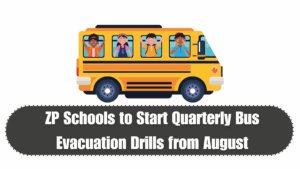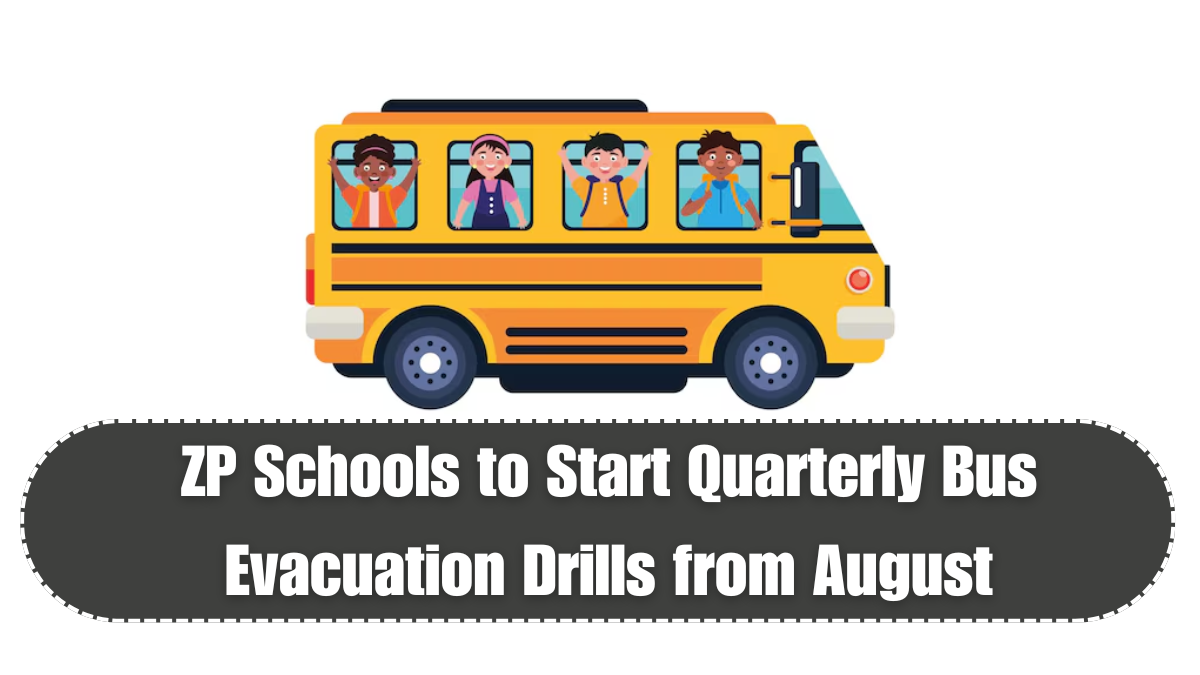Zilla Parishad (ZP) schools across Maharashtra are launching student safety transport drills as a proactive step to strengthen school safety protocols. Starting August 2025, all ZP-managed schools will conduct quarterly bus drills to prepare students for potential emergencies during transportation. This initiative marks a landmark step toward building awareness, confidence, and preparedness among young students.
The initiative ensures that students, drivers, and transport staff are equipped to handle various emergency situations, such as fire, brake failure, and road blockages. By making emergency training a routine activity, ZP authorities aim to instill a strong sense of safety culture within schools and transport services. Every school will receive a standard procedure manual and demonstration kits to carry out these drills efficiently.

Bus drill training to cover multiple emergency scenarios
The bus drill module includes simulation-based activities where students are taught how to safely evacuate through emergency exits, maintain calm during breakdowns, and communicate clearly with school staff. Trained volunteers and transport monitors will assist during each session to ensure students understand their roles in real-time scenarios.
In addition, school staff will be trained to handle injuries, coordinate with nearby hospitals, and use emergency communication channels effectively. These drills will be scheduled every three months, forming an ongoing part of student safety transport drills to keep all stakeholders alert and well-informed.
Emergency training sessions for transport and school staff
Beyond student participation, emergency training also focuses on preparing bus drivers, conductors, and school teachers. They will undergo practical sessions on child safety protocols, first aid response, and evacuation leadership. These training modules are conducted by the district disaster response cell in collaboration with the education department.
To make the training more interactive, role plays and visual demonstrations will be part of the workshops. Each staff member will also be provided a handbook containing a checklist of safety tools and protocols, ensuring complete readiness during student safety transport drills.
Government emphasis on school safety during commutes
The introduction of bus drills highlights the government’s increased focus on school safety beyond classroom premises. Several incidents in past years have shown the need for systematic evacuation knowledge. These student safety transport drills aim to address that gap.
District Education Officers confirmed that inspections will be carried out after each quarter to ensure schools are consistently conducting the drills. Schools failing to meet the schedule may face temporary suspension of their transport permits, showing the seriousness of this mission.
Table: Key Components of Student Bus Safety Drills
| Component | Description | Frequency |
|---|---|---|
| Evacuation Simulation | Practice using main and emergency exits | Quarterly |
| First Aid Training | Basic treatment for cuts, fractures, or choking | Bi-annually |
| Staff Orientation | Drivers, teachers, and conductors trained in response | Quarterly |
| Communication Protocols | How to report, alert, and escalate issues | Quarterly |
| Student Awareness Kits | Visual guides, handbooks, and demo charts | Annually |
FAQs
What are student safety transport drills?
These are organized bus drills that teach students how to evacuate safely and stay calm during a school bus emergency.
When will these drills start?
The student safety transport drills will begin in ZP schools starting from August 2025 and continue quarterly.
Who conducts the emergency training?
The education department, in partnership with the disaster response team, conducts the emergency training for students and staff.
What kind of emergencies are covered in the bus drill?
Scenarios like bus fire, engine failure, accident response, and evacuation in hilly terrain are part of the bus drill exercises.
Why are these drills important for school safety?
They ensure students and staff know exactly how to act during unexpected incidents, strengthening overall school safety during commutes.
